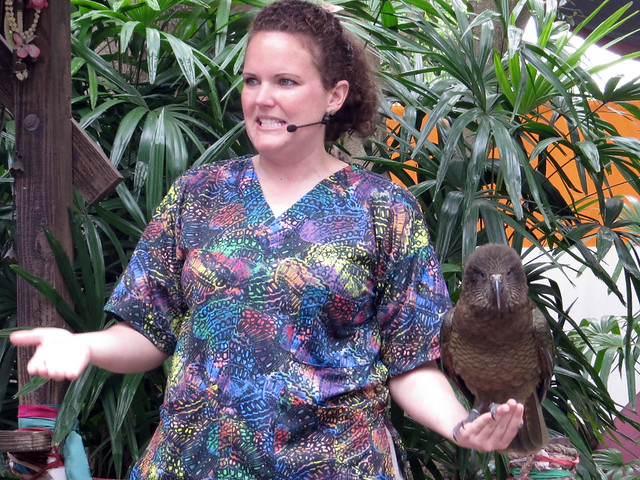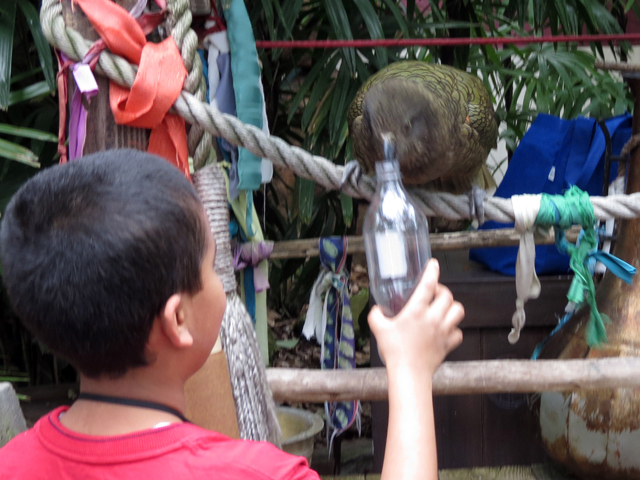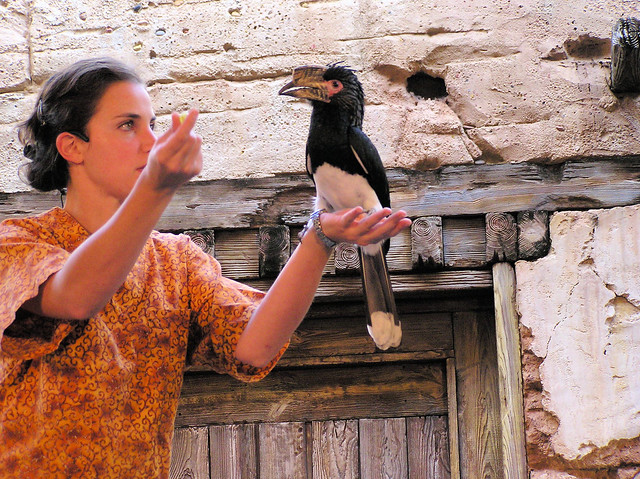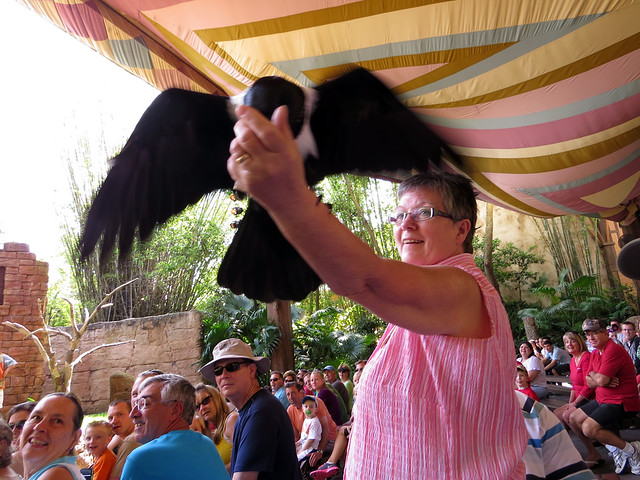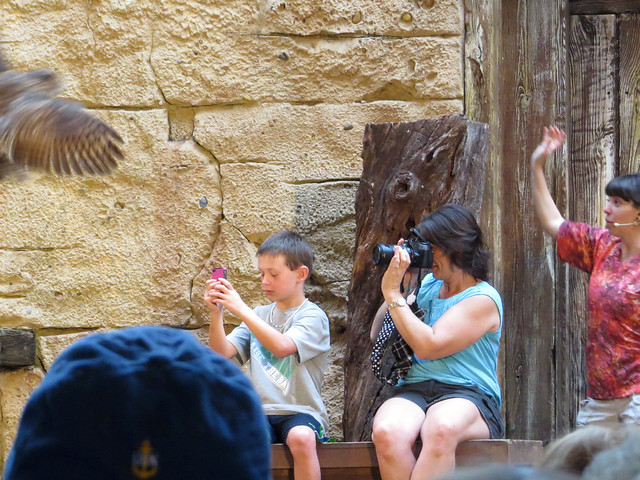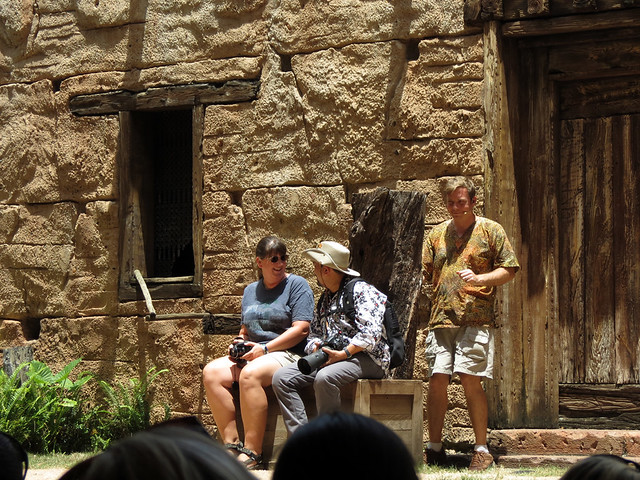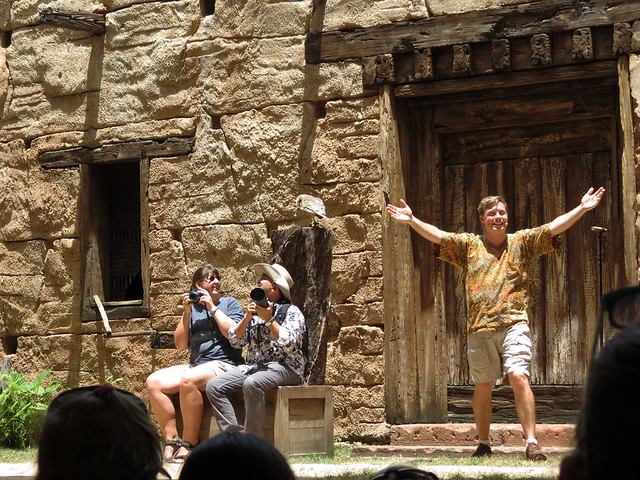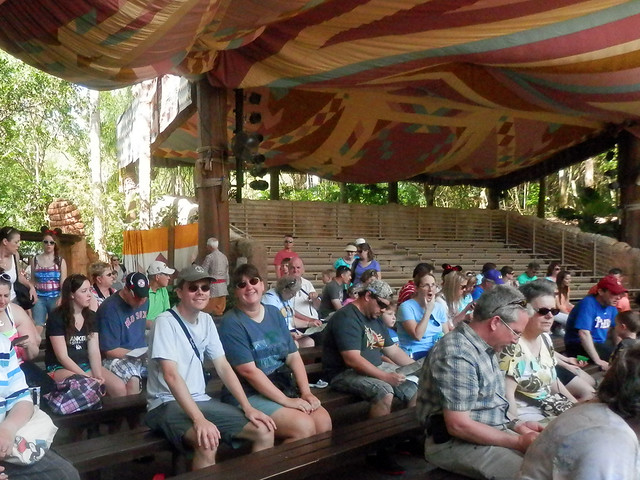Birding Gemini Springs, April 2014
Note: this post is back-dated.
There were a lot of disruptions in April. Inconvenient home repairs took up a lot of time, as did preparations for a long trip my husband and I took in May. At the end of the month, however, my mom visited, and that was just the best!
During April, I birded Gemini Springs 10 times. I saw 68 different species, which is more than April 2013 (55 species) and April 2012 (which was a very good month even with just 67 species). One of the 68 was an all-time new bird for me at Gemini Springs (see below).
Here are some photo highlights from April’s birding outings at Gemini Springs.
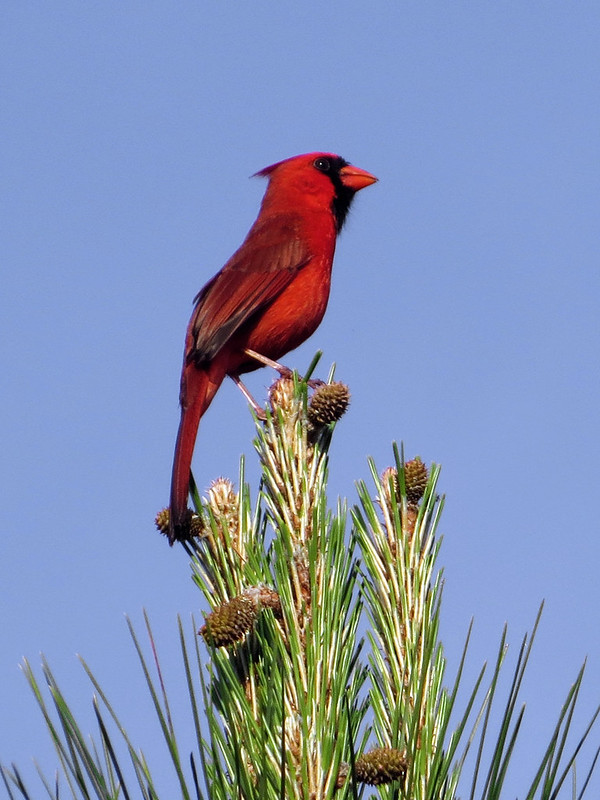
Northern Cardinal | 04 April 2014
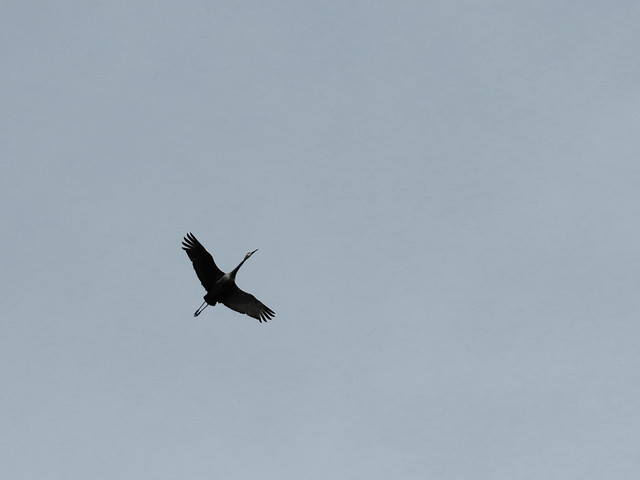
Sandhill Crane | 07 April 2014
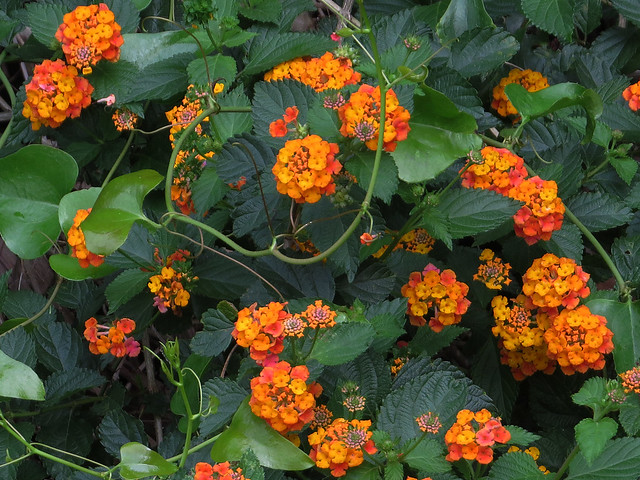
lantana | 09 April 2014

Little Blue Heron | 11 April 2014

Grey Catbird | 12 April 2014
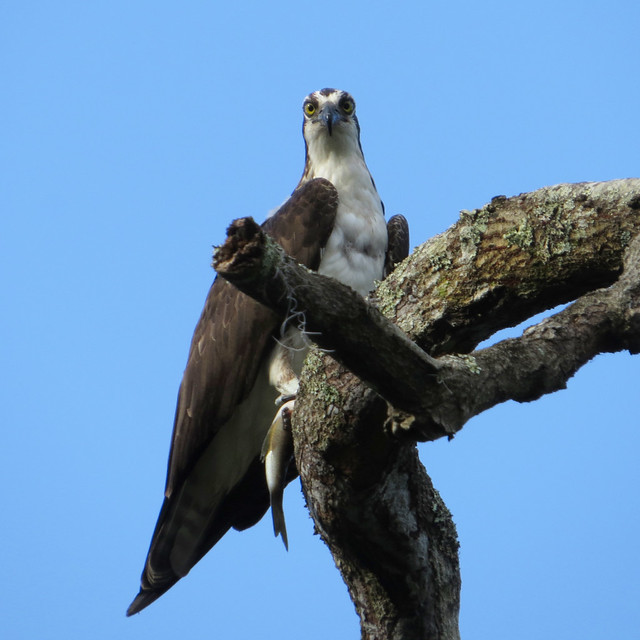
Osprey | 12 April 2014
On April 14, I looked across a field towards an area where I sometimes find Loggerhead Shrikes. In the far distance I saw a greyish bird of the right size, and almost dismissed it as my sought-after shrike. But something just wasn’t right. I looked again and found a Northern Mockingbird in the same tree, and a Great Crested Flycatcher. I thought my shrike was gone but the birds all appeared to be playing musical branches in the same tree and I was able to relocate the shrike that just didn’t look quite right. After another look I realized it was a Gray Kingbird! This is a very good bird, especially for inland Volusia (at least I think it is!), so I tried really hard to take a photo. The mockingbird and flycatcher were still bouncing around the tree so when I was able to check my photos at home I realized I got about as many photos of the other birds as I did of the kingbird. The lousy photo below is extremely cropped from a digitally-zoomed photo. Not the best, but identifiable!
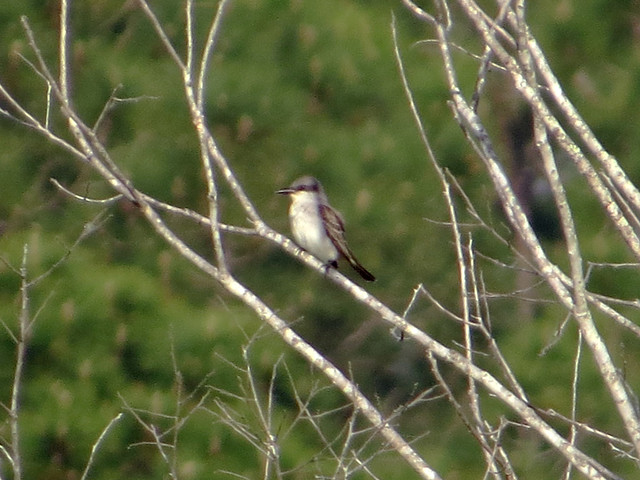
Gray Kingbird | 14 April 2014
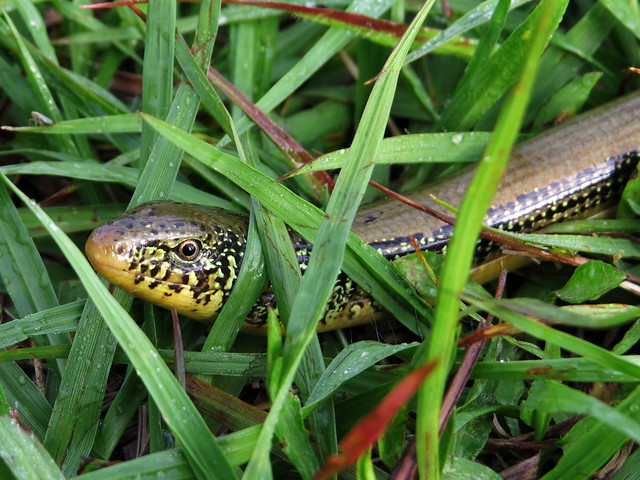
Eastern Glass Lizard | 14 April 2014

Marsh Rabbit | 14 April 2014
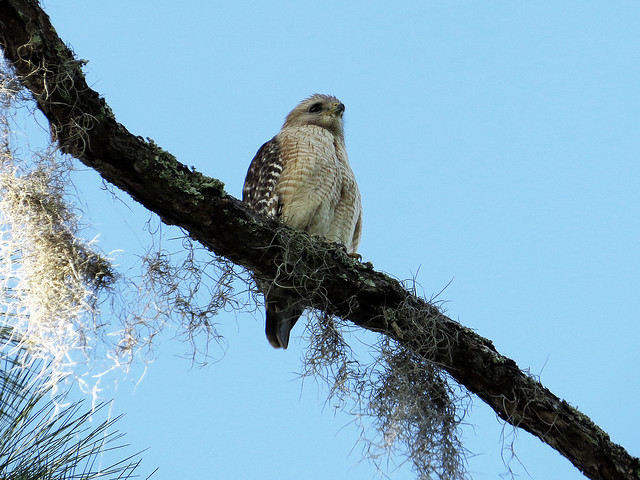
Red-shouldered Hawk | 16 April 2014

oh no, an unknown! possible brown form Red-fringed Emerald (Nemoria bistriaria)? | 18 April 2014

American Alligator | 19 April 2014

Blogger with mom | 19 April 2014

Brown Anole with breakfast (cockroach sp?) | 23 April 2014
If you are a fan of Gemini Springs, please consider becoming a Fan of Gemini Springs on Facebook!
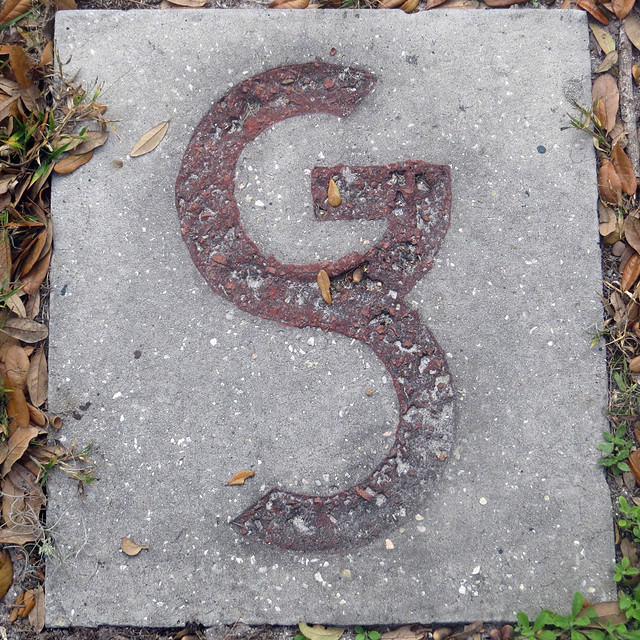
Gemini Springs, April 2014 month bird list
Wood Duck – Aix sponsa
Wood Stork – Mycteria americana
Double-crested Cormorant – Phalacrocorax auritus
Anhinga – Anhinga anhinga
Great Blue Heron – Ardea herodias
Great Egret – Ardea alba
Snowy Egret – Egretta thula
Little Blue Heron – Egretta caerulea
Tricolored Heron – Egretta tricolor
Cattle Egret – Bubulcus ibis
Green Heron – Butorides virescens
White Ibis – Eudocimus albus
Glossy Ibis – Plegadis falcinellus
Black Vulture – Coragyps atratus
Turkey Vulture – Cathartes aura
Osprey – Pandion haliaetus
Bald Eagle – Haliaeetus leucocephalus
Red-shouldered Hawk – Buteo lineatus
Red-tailed Hawk – Buteo jamaicensis
Sora – Porzana carolina
Common Gallinule – Gallinula galeata
American Coot – Fulica americana
Sandhill Crane – Grus canadensis
Black-necked Stilt – Himantopus mexicanus
Ring-billed Gull – Larus delawarensis
Forster’s Tern – Sterna forsteri
Mourning Dove – Zenaida macroura
Common Ground-Dove – Columbina passerina
Ruby-throated Hummingbird – Archilochus colubris
Red-bellied Woodpecker – Melanerpes carolinus
Downy Woodpecker – Picoides pubescens
Pileated Woodpecker – Dryocopus pileatus
Great Crested Flycatcher – Myiarchus crinitus
Eastern Kingbird – Tyrannus tyrannus
Gray Kingbird – Tyrannus dominicensis
White-eyed Vireo – Vireo griseus
Blue-headed Vireo – Vireo solitarius
Red-eyed Vireo – Vireo olivaceus
Blue Jay – Cyanocitta cristata
American Crow – Corvus brachyrhynchos
Fish Crow – Corvus ossifragus
Tufted Titmouse – Baeolophus bicolor
House Wren – Troglodytes aedon
Carolina Wren – Thryothorus ludovicianus
Blue-gray Gnatcatcher – Polioptila caerulea
Ruby-crowned Kinglet – Regulus calendula
Gray Catbird – Dumetella carolinensis
Brown Thrasher – Toxostoma rufum
Northern Mockingbird – Mimus polyglottos
Cedar Waxwing – Bombycilla cedrorum
Black-and-white Warbler – Mniotilta varia
Common Yellowthroat – Geothlypis trichas
American Redstart – Setophaga ruticilla
Northern Parula – Setophaga americana
Blackpoll Warbler – Setophaga striata
Black-throated Blue Warbler – Setophaga caerulescens
Palm Warbler – Setophaga palmarum
Yellow-rumped Warbler – Setophaga coronata
Yellow-throated Warbler – Setophaga dominica
Prairie Warbler – Setophaga discolor
Eastern Towhee – Pipilo erythrophthalmus
Swamp Sparrow – Melospiza georgiana
Northern Cardinal – Cardinalis cardinalis
Red-winged Blackbird – Agelaius phoeniceus
Common Grackle – Quiscalus quiscula
Boat-tailed Grackle – Quiscalus major
Brown-headed Cowbird – Molothrus ater
American Goldfinch – Spinus tristis




